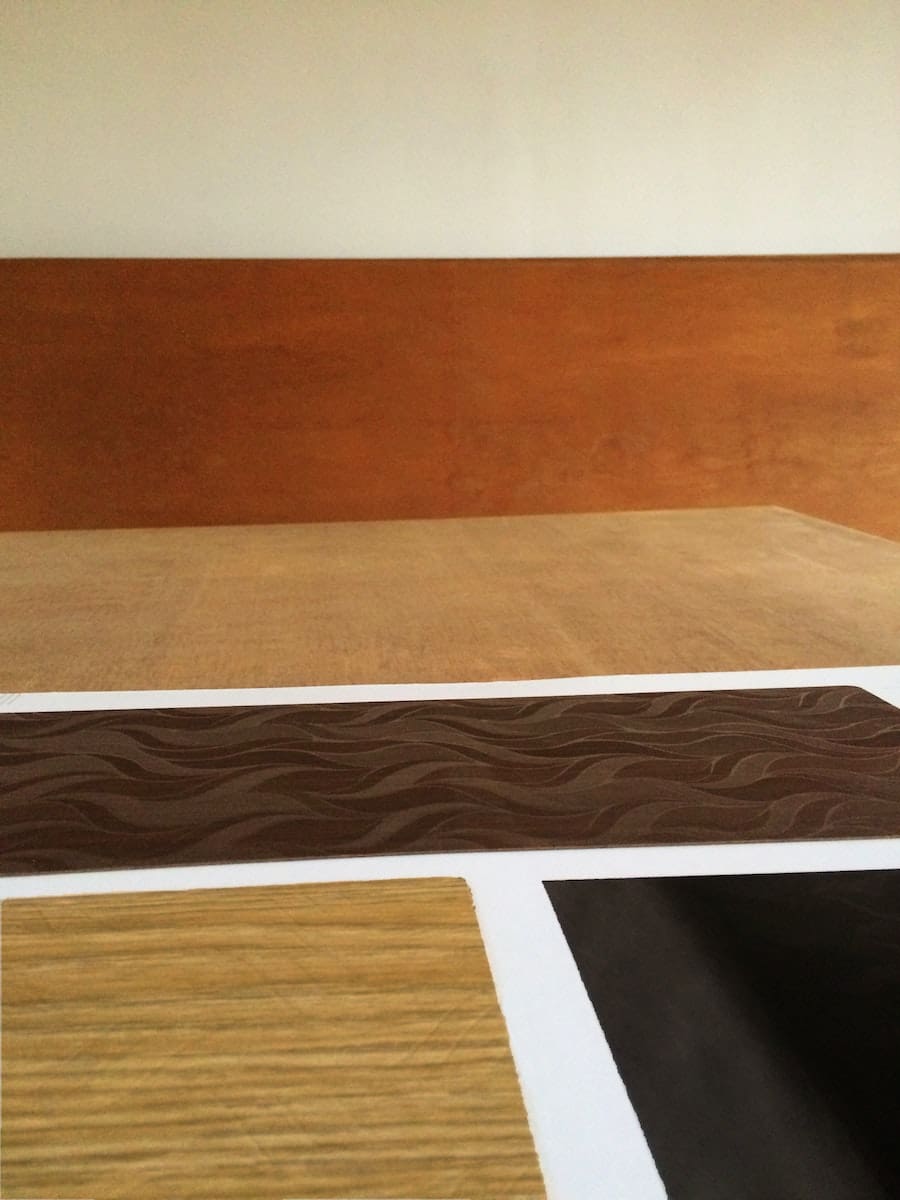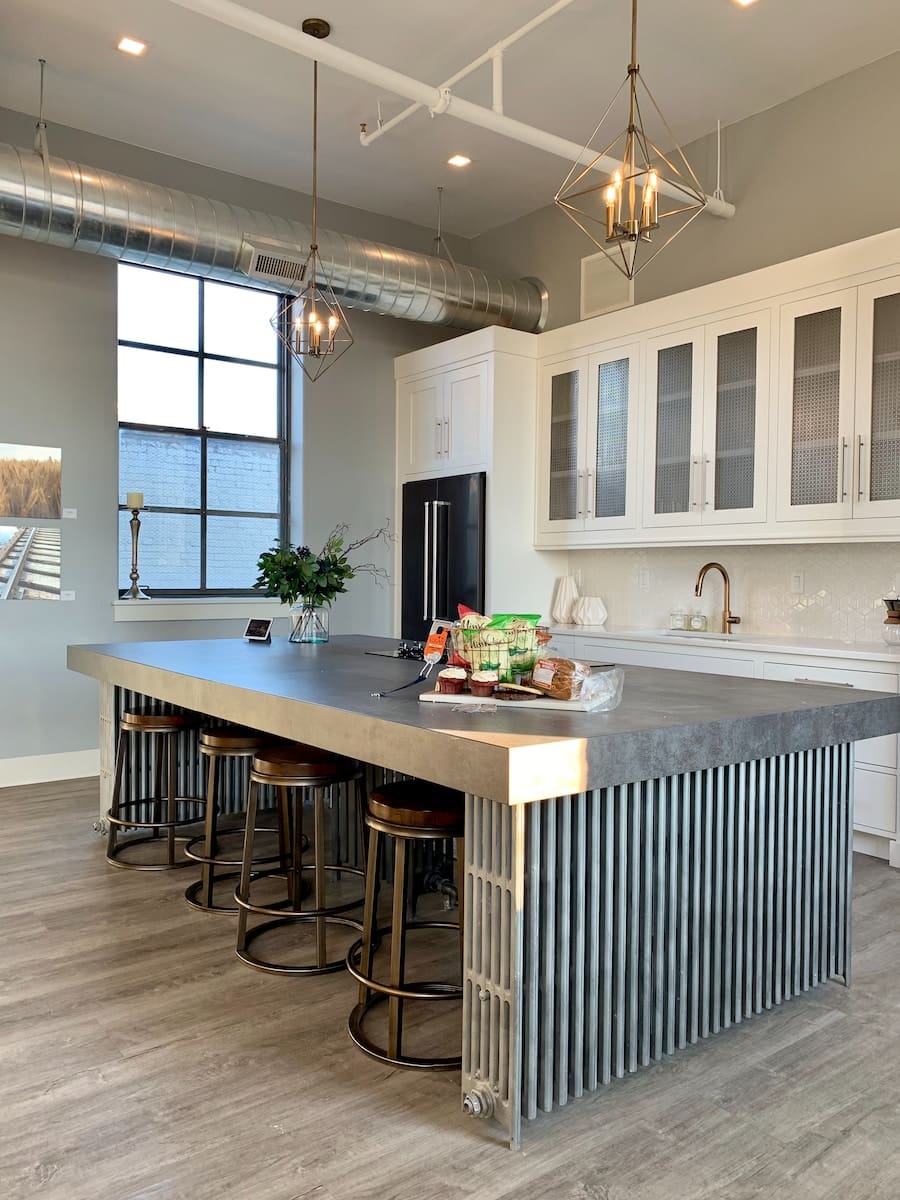Formica International and Bombay Burmah Trading Corporation established a joint venture in the 1960s. Formica India Limited began distributing composite material.
The organization was renamed and rebranded as AICA Sunmica in 2011. When the business released Sunmica in 1998, they were rewriting history.
Paper makes up the majority of Formica sheets, while melamine formaldehyde and phenol-formaldehyde make up the remaining fraction.
Key Takeaways
- Sunmica, a brand of laminates in India, is a popular choice for home and office furniture, while Formica is an international brand known for its durable and versatile laminates.
- Sunmica and Formica resist heat, moisture, and stains, making them suitable for various applications like countertops and cabinetry.
- Formica offers a broader range of design options and finishes than Sunmica, catering to different tastes and styles.
Sunmica vs Formica
Sunmica is a brand of laminate sheets that are made in India. Formica is a brand of laminate sheets that the Formica Group, a multinational corporation, makes. They differ by brand name and location. Sunmica is an Indian brand, while Formica is an international brand.

The price of the Sunmica is determined by the sheets’ per-square-foot area. As a result, Sunmica sheets are more expensive than their counterparts.
Darker hues, on the other hand, are mixed with lighter hues to create a more appealing working environment. Yellow with blood-red tiles, for example.
Sunmica is mostly utilized in the design and renovation of homes. Sunmica is favored as a laminate due to its durability, high quality, affordability, and a variety of features.
The price of Formica sheets varies depending on where they are used. The price of Formica laminate sheets used in the furniture is different from the price of Formica laminate sheets used in other activities.
Paper makes up the majority of Formica sheets, with melamine-formaldehyde and phenol-formaldehyde accounting for the remainder.
Formica sheets come in two different types. One that can stop bacteria from growing and the other that doesn’t.
Comparison Table
| Parameters of Comparison | Sunmica | Formica |
|---|---|---|
| Thickness | Comparatively Less | Comparatively more |
| Composition | Paper and Plastic | Paper, Phenol-Formaldehyde, Melamine formaldehyde |
| Properties | Permanent Protection from fungus, bacteria | Temporary protection, artificial. |
| Price | Less Pricier | More Pricier |
| Durability | More, Scratch resistant | Less, not scratch resistant |
What is Sunmica?
Sunmica is made out of a mix of plastic resins, translucent paper, and aesthete brown, and it’s also lighter.
Sunmica was only 1 millimeter thick, contrasted to the other Formica variations, which were 1.5 millimeters thick.
Three sheets of Sunmica are commonly used. These are aligned with the basic layer, which isn’t utilized for decoration. On this bottom layer, carpenters apply glue.
The second layer, on the other hand, serves an important role.
As a result of this, Sunmica boasts a high level of brand recall that no other laminate brand can match. Sunmica is indisputably timeless, with over 400 hues and a variety of textures to choose from.
Sunmica’s quality can be determined through wetness exposure, strain, steam, physical scratching, wear and tear, and from active ingredients, burns, and fire.

What is Formica?
Paper accounts for the majority of Formica sheets, with melamine-formaldehyde and phenol-formaldehyde accounting for the remainder.
Formica sheets are offered in two different types. One that can stop germs from growing and another that doesn’t have any antibacterial characteristics.
As a result, Formica sheets may or may not be antibacterial.
The thickness varies between 0.7 and 0.9 millimeters. The cost of Formica sheets varies depending on where they are used.
The price of Formica laminate sheets for use in furniture is different from the price of Formica laminate sheets for use in other activities. As a result, they are more expensive than Sunmica.
Formica Laminates come in a wide range of colors, textures, and patterns. They come in a variety of solid color options. Their textures are transformed into solid colors with the help of light and depth.
Intricate dot patterns, adaptable cloth, and a variety of other styles are among the most popular. Formica sheets are also available in eight-foot-high and four-foot-wide sizes.

Main Differences Between Sunmica and Formica
- Sunmica laminates come in a variety of colors, starting from red, blue, green, yellow to the amalgamation of various colors giving an exotic view.
- However, darker hues are combined with lighter hues to make them look better for working space. Like, yellow combined with blood-red tiles.
- On the other hand, Formica Laminates can be found in a variety of colors, textures, and designs. They are available in various range of solid colors.
- With the help of light and depth, their textures get converted into solid colors. Some of the popular appearances are intricate dot patterns, versatile textile, and many more.
- The thickness of the Sunmica sheets varies from 0.6mm to 1.5mm, with a length of eight feet and a width of four feet. On the other hand, Formica sheets are also available in a size of eight feet height and a width of four feet. The thickness ranges between 0.7mm to 0.9mm.
- Sunmica comes in various price ranges based on the use of pattern and the quality of the laminate sheet used. The price is calculated based on the per square feet area of the sheets. Thus, the price of the Sunmica sheets is comparatively lower than their counterpart. On the other hand, the price of the Formica sheets varies based on the use of the sheets in various places. The price of the laminate sheets made up of Formica is different for the use in furniture than it is used in other activities. Hence, they are comparatively pricier than Sunmica.
- The sheets made up of Sunmica are highly durable. They are scratch-resistant as well. Up to a certain extent, these sheets can withstand heat and moisture, tear and wear. However, precaution should be taken so that they are not exposed to wet areas for a longer period. On the other hand, Formica sheets are not scratch scratch-proof durable unless and until the sheets are used as cutting boards. However, they also contribute around two or three decades of durability. They can withstand heavy impacts as well.
- The composition of Sunmica is characterized by the amalgamation of translucent papers, aesthete brown papers, and plastic resins. Thus, they are made up of a blend of plastic materials and papers. On the other hand, the major percentage of the Formica sheets are made up of paper, and the remaining percentage is made up of melamine formaldehyde and phenol-formaldehyde.
- Sunmica is known to possess anti-fungal and anti-bacterial properties. On the other hand, there are two varieties of Formica sheets available.One which can inhibit the growth of bacteria and another which does not possess any anti-bacterial properties. Thus, Formica sheets may either to antibacterial or may not be.
